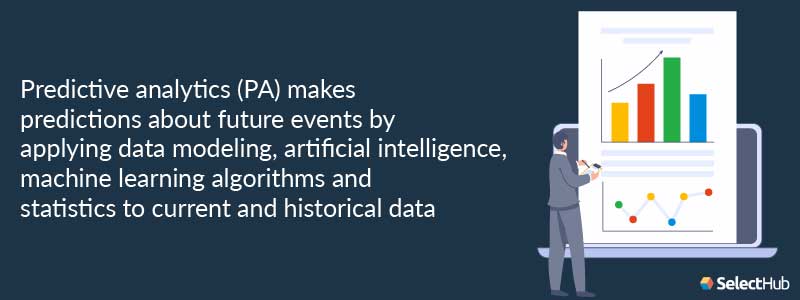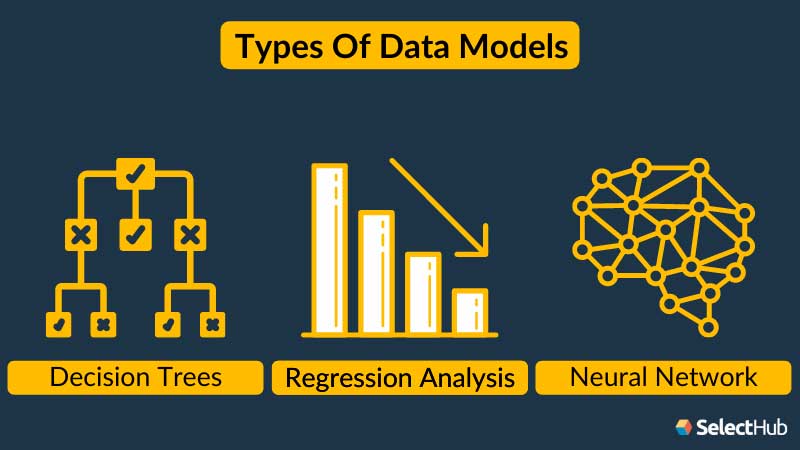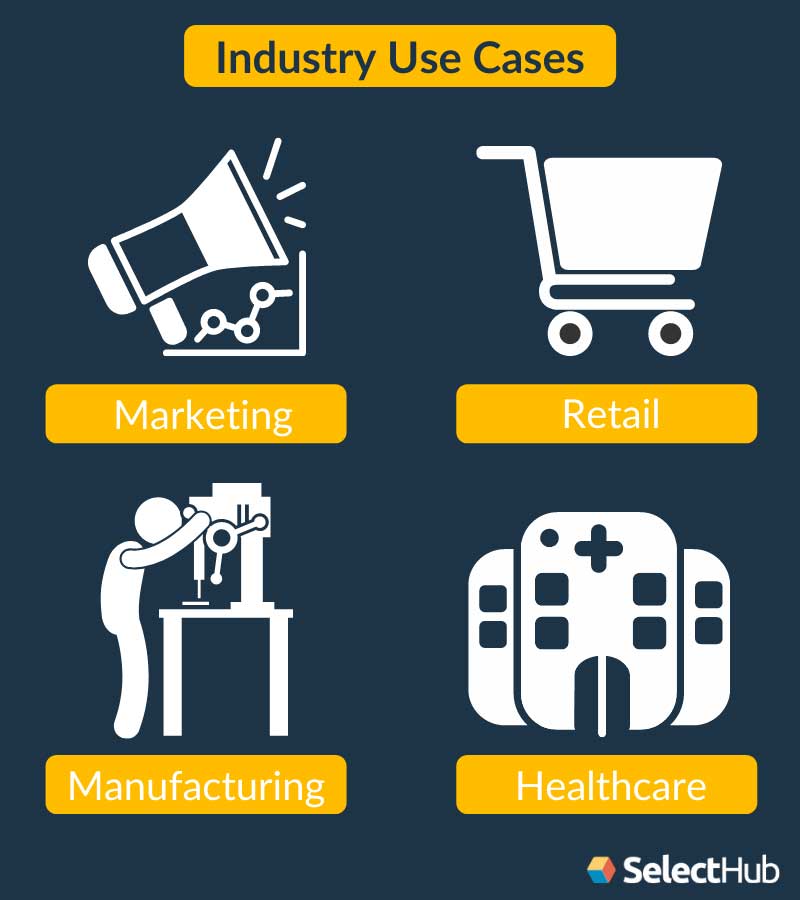Imagine what could happen if companies do not plan for the future — their products can end up being totally out of sync with consumer expectations, leading to low sales, or they could run out of stock just because they did not anticipate consumer demand. One solution to this problem lies in leveraging predictive analytics — a subset of business intelligence tools. Predictive analytics makes predictions about future events by applying data modeling, artificial intelligence, machine learning algorithms and statistics to current and historical data.

As a branch of advanced analytics and data science, predictive analytics gives companies more control over their future, helping them to identify business opportunities and mitigate potential risks.
What is Predictive Analytics?
While descriptive analytics is a BI software mainstay that looks at historical business data to analyze past performance, predictive analytics goes beyond by combining that same historical data with rules and algorithms to determine the possible outcome of an event. Now you know what is likely to happen; what if you could also figure out how to benefit from these predictions, or what risks are involved in following a particular course of action?
Prescriptive analytics helps here – you can decide what to do with intelligent recommendations for possible future actions, all backed by your data.
This article delves into the world of predictive analytics software and how it is helping enterprises boost efficiency and streamline internal processes.
Key Takeaways
- Predictive analytics tools help enterprises improve their operations today with an eye on greater returns tomorrow.
- Though often confused for each other, predictive analytics and machine learning are different data science techniques that organizations can use together.
- Data scientists use various data models for forecasting business trends based on data volumes and the data type associations required for a specific business case.
- Enterprises use predictive analytics for demand forecasting, risk management, fraud prevention and claims management.
- Enterprises need to have a clear picture of their business goals to harness its true power.
Primary Benefits
Predicting what is likely to happen in the future gives enterprises more control over their operations and how they want to position their offerings. Let’s look at some of these benefits in detail.

Boost Operational Efficiency
There are multiple internal touchpoints where an organization can integrate predictive analytics for smoother day-to-day operations. Managers can allocate resources to new projects based on near-accurate predictions on when ongoing tasks are likely to be completed.
On the same lines, companies can ask HR departments to hire more staff if they anticipate heavier workloads soon. In sales, accurate forecasts are critical for budget allocation, demand and supply management, performance incentivization and preparing the business roadmap.
Visualize Market Trends
Predictive analytics tools use statistical techniques to model data based on click-through rates, bounce rates, churn rates and more to offer insight into what customers think of and expect from your product or service. This information is priceless for enterprises looking to design winning marketing campaigns and maximize customer engagement and outreach.
You can run models with historical data, A/B testing results, heatmaps and other conversion testing tools to forecast how your customers are likely to respond to changes to a given variable.
Mitigate Risk
The global risk analytics market size is projected to reach $65,253.66 million by 2026, growing at a CAGR of 17.40% from 2019 to 2026. Risk analytics can help enterprises determine the probability of growth or decline in business based on current and historical information.
Data mining techniques and machine learning algorithms are delivering high-quality predictions, as they become more and more accurate. Risk analytics has many practical business applications: for example, financial institutions, such as loan companies and banks, can utilize predictive modeling of customer data to assess the individual’s risk of non-payment, and ultimately decide on whether to approve loan requests.
Enterprises with heavy machinery can mitigate damage to their hardware by configuring alerts for wear and tear and periodic upkeep through predictive maintenance techniques.
Prevent Fraud
According to GIACT, almost half (47%) of the consumers surveyed reported that they had been victims of identity theft, more than one-third (37%) had experienced application theft, and almost a similar percentage (38%) had had their accounts taken over by unauthorized entities.
Nowadays, people use online services for purchasing consumer goods, consulting physicians, banking, and investing and trading in stocks, among other tasks involving sensitive data. When users input personally identifiable information (PII) and sensitive financial details online, it exposes them to identity theft and fraud.
Online service providers, including e-commerce vendors and financial institutions, use predictive modeling to analyze historical data and identify gaps and discrepancies in existing workflows. They can then strengthen their authentication and data security protocols to prevent malware attacks, identity theft and information breaches before they happen.
Predictive Analytics vs. Machine Learning
Often, people use the terms predictive analytics and machine learning interchangeably. Though both involve analyzing vast, complex data sets through data modeling, the similarity ends there. Predictive analytics involves the statistical analysis of historical information to predict future trends.
Machine learning is a branch of computer science and artificial intelligence (AI) that leverages user data and algorithms to imitate human learning, improving accuracy as it goes.
While predictive analytics often works with ML-based algorithms, machine learning is a computational process and does not necessarily result in predictive modeling unless used explicitly for forecasting. On an individual level, machine learning is already a part of our lives through virtual personal assistants like Google, Alexa and Siri, or, say, personalized news feeds and targeted ads based on our previous searches and topics of interest.
At an organizational level, machine learning algorithms are instrumental in modeling data to enable critical business decision-making.
Types Of Data Models
Predictive analytics software captures relationships among various factors through data mining and modeling, often creating visualizations that allow users to more easily identify patterns and trends. Some examples of market leaders in enterprise analytics include IBM SPSS Statistics, SAS Advanced Analytics and RStudio.
Analytics software pulls information from big data sources like Hadoop, Hive or an organization’s proprietary database, depending on the questions the user is trying to answer. After aggregating and cleaning the data, the tool analyzes it with AI and ML to make predictions about how data will look in the future. This is where data modeling comes in.
Here are the general steps to creating predictive models.
- Clean the data to remove inconsistencies.
- Identify a modeling approach to take.
- Prepare the data for the selected modeling technique.
- Define a subset of the data to be used to train the model.
- Test run the training model.
- Validate the model with other non-training data.
- Use the model for prediction if the results are satisfactory.
Data scientists use varied predictive models for each use case, depending on the volume, quality and associations of the related data sets. Let’s take a look at the main model types and where enterprises can use them.

Decision Trees
A decision tree is a visual representation of a machine learning algorithm that provides various decisions and their possible outcomes to help you decide upon a course of action. Usually displayed vertically or horizontally, it shows specific decisions as branches and their results as leaves.
Interestingly, decision trees are most suited to analyze inconsistent and erroneous data since they quite adeptly fill in the most common value of any missing attributes by assigning a probability to each of the possible values based on other samples of similar data.
Random forests are collections of decision trees; though they require computing power and a much longer period to train the data, random forests give more accurate and stable predictions. They are more popular with enterprises interested in data-driven insights.
Regression Analysis
Regression analysis is a multivariate statistical technique that helps data scientists analyze how independent variables can impact one or more dependent variables through what-if scenarios. Marketing teams can assess, for instance, how traffic from social media affects form submission on the company’s website, or how many more leads they can hope to capture if they increase their marketing spend.
Regression analysis can help enterprises astutely untangle the myriad variables that define their product and create meaningful correlations between them. Enterprises can look into the future, such as, what sales will look like in the next quarter, and work backwards as well, such as, why did sales dip for a particular location in the last six months?
Tools like Tableau provide regression analytics through integration with R.
Neural Networks
Neural networks are computational machine learning algorithms that imitate the way the human brain thinks. They leverage predefined labels for face and image recognition, voice detection and speech transcription, much like humans do. Even with no labels to guide them, they use machine learning to help produce highly accurate models.
You would probably need neural networks when you have large amounts of data, and also when the relationship between variables is not clear at first glance so you cannot use linear regression.
However, they can be resource-intensive in terms of computing power and training large datasets. Although they will work with your data even if it is incomplete, the outcome is likely to have incomplete data results as well.
Industry Use
The predictive analytics market is projected to increase in value to $23.4 billion in 2030, up from $6.9 billion in 2019, at an impressive CAGR of 24.9%. Predictive analytics can help businesses in all sectors anticipate change and eliminate obstacles before they occur.
Let’s look at a few of the industries using predictive analytics to streamline operations, minimize risk and boost business performance.

Marketing
Customer preferences change with time — and in today’s competitive market, that could be almost every day. What is trending today might be passé tomorrow. Enterprises are actively investing in technologies that can help them understand consumer interests and market trends so they can optimize ad spending and identify outreach opportunities.
Differentiation is the name of the game to cut through the constant ad noise and be noticed. Mere display ads are not enough; brands are targeting potential customers where they are — on their mobile devices and on social media channels.
And analytics ensures that companies can keep their messaging on point, thanks to customer sentiment analysis gleaned from social media shares and other existing product data.
Retail
Predictive analytics has been a game-changer for enterprises to fine-tune their offerings according to existing and upcoming market trends. Now, enterprises can leverage predictive data insights to define specific prices as per peak and off-season, launch new brands, discontinue legacy products, offer promotions and implement cross-selling and upselling.
Think of big e-commerce retailers like Amazon and how they instinctively know your preferences, especially that coffee-maker you looked at but did not buy the last time you visited their site. They know precisely how to target you — via reminder emails and recommendations for similar products to add to your shopping cart.
This is a prime example of business intelligence and predictive analytics at work, with data mining, ML-AI, deep learning algorithms, and, in some cases, simple statistics. Retailers use metrics such as customer lifetime value (CLV) to maximize their ROI by actively focusing on customers that are likely to stay with the brand for a longer time.
Manufacturing
Many products sell better during certain times of the year and in specific regions. Forecasting this rise in demand can help enterprises save a tidy sum during inventory planning and resource allocation. Sensors embedded in machines provide valuable insights into maintenance and upgrade requirements over time.
Preventive maintenance involves setting alerts for when issues are detected in machines and when to reduce their workload to minimize damage. Predictive analytics tools enable automated data aggregation and cleaning and more efficient storage through data compression.
As a result, the quality of data models is enhanced, providing more robust insights to manufacturers.
Healthcare
Predictive analytics has helped predict COVID-19 trends by combining location-based data, electronic health records, tweets and other information with spatial analysis. According to the Affordable Care Act, popularly known as Obamacare, the administration can penalize medical care facilities if they admit a patient within 30 days of discharge.
This caveat is in place to ensure that hospitals provide better patient care during the first admission itself. With PA, healthcare institutions can avoid penalties by identifying individuals who might need hospitalization beyond their planned discharge date.
Physicians can identify at-risk patients by monitoring their vitals through wearables and the study of genomics. Additionally, employers can decide on insurance offerings for their employees by getting actual figures for future medical costs through predictive algorithms.
For SMBs
Predictive analytics is easier to implement for most enterprises, with big data readily accessible to large organizations via cheap cloud storage and scalable computing. The introduction of affordable solutions has made business intelligence much more accessible to various organizations that historically were not able to utilize them.
But predictive analytics isn’t just for larger companies; it can also transform small and medium-sized businesses (SMBs) by helping them identify new opportunities and drive more sales. SMBs can strategize better with data-driven insights since their decisions are based on evidence and not on mere hunches.
To maximize gains, SMBs must find ways to take the unused big data they already generate every day and put it to use for business forecasting, and predictive analytics helps them do so.
In order to maximize its usefulness, predictive analytics needs to be incorporated into an organization’s corporate culture itself, and this is where SMBs especially need to step up. Companies need to sync analytics projects with their day-to-day operations and decision-making processes.
Managers must make predictive analytics a focal point of their strategy for solving problems and identifying opportunities, rather than letting those data insights exist in a silo.
Selecting An Analytics Tool
The first and potentially most crucial step to getting the right predictive analytics tool for your organization is to identify the additional features you will need. Many BI tools offer predictive analytics capabilities, but not all. You can use this BI requirements template to familiarize yourself with available features and assess the most crucial for your business.
Or, refer to our BI comparison report for detailed information on the top industry leaders in analytics. Create a shortlist by matching products to your requirements — we recommend identifying between five and seven.
For a feature-by-feature comparison of predictive analytics tools against your unique business requirements, check out our Decision Platform. Once you have a product shortlist ready, you can contact the respective vendors for trials, demos and pricing information to help you decide, or you can reach out to us to help guide you through the selection process.
Conclusion
Even with all its benefits, predictive analytics isn’t a magic mantra that will provide you clear-cut, actionable predictions with a simple click; the uncertainty factor is always there. Forecasting is like looking into a crystal ball — what you see might not come true, as the future isn’t set in stone. To get the best results, ensure that you have a clear understanding of the business issues you are trying to solve and pick data you will need to do that. Additionally, hiring skilled data scientists is worth the investment, and for near-accurate forecasting, excellent data quality is of the utmost importance.
How have you used any analytics tools for business forecasting? Or are you considering buying one for your organization? Let us know in the comments.


6 comments
Join the conversationShayur Maharaj - January 27, 2021
As a marketing analytics I cannot stress the importance of analytics for providing insight so I do agree with many of the compelling points your provide
robin speculand - July 4, 2020
How do you see predictive analytics being used as part of strategy planning?
Bergen Adair - July 6, 2020
Great question, Robin, thanks for reading! Predictive analytics are ideal for supporting the strategic planning process, as well as forecasting activities. Predictive analytics performed on specific data points to answer business questions builds a more reliable foundation for making forecasts and accurately planning for the future. It also helps narrow the focus of strategic planning from generalizations to more individualized predictions.
Tochi Daniella - February 5, 2020
yea very interesting
Hsing Tseng - February 5, 2020
Thank you for reading!
parag yadav - December 31, 2017
best article which really help me